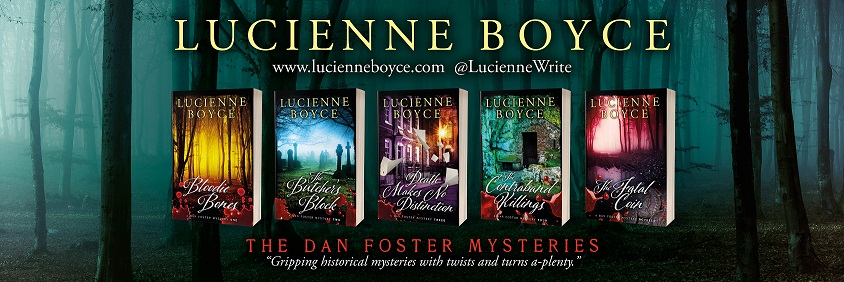On 16 March 1912 a leader in The Times explained suffragette
militancy by attributing it to women’s “Insurgent Hysteria”. The article
suggested that “in a large number of cases, even though in the strict sense
insanity is not present, there is a tendency to some form of hysteria or morbid
moods akin thereto”. Women’s mental weakness was inherent in their physiology:
their “senseless outrages against property” could best by understood by
physicians. Amongst the correspondence the leader inspired, one doctor, in a
letter headed “What Every Doctor Knows”, agreed that physicians did indeed
understand the type of woman referred to. He explained that “when she has
reached a certain age, we know that there is no help in us”. To prevent the
development of such characters, he added, “the lunacy laws will require
revision.”
This free event is part of the Dreadnought South West series of events commemorating the south west’s contribution to the Suffrage Pilgrimage of 1913. For more information about the project see http://dreadnoughtsouthwest.org.uk/
Medical scientist Sir Almroth
Wright produced
a whole book – The Unexpurgated
Case Against Woman Suffrage – exploring the theme, characterising the suffragettes as
“spinsters in a state of retarded development”, women who could not understand that their
“unsatisfied sexuality is an intellectual disability.” He characterised
the suffragettes as “ungrateful women” – disappointed wives , the sexually
embittered, and those who wanted to have everything for nothing.
Other newspapers, like the Daily
Express, also described suffragettes as “crazy”, “frenzied” and “insane”. The
insane, of course, could not vote. Neither could criminals.
Suffragette militancy itself proved
that women should not have the vote. “If anything could strengthen the general
conviction of ordinary men that women are unfit for the suffrage, it surely
would be the supremely silly conduct of the window-breakers”, thundered The
Times on 26 June 1912.
Before forcible feeding was used on
suffragettes, it was used on the insane, and it continued to be connected with
insanity. A male suffragist, William Ball, was said to have been driven mad by
forcible feeding. Bristol woman Alice Walters was so badly affected by forcible
feeding she feared that if it continued she “should have gone mad”.
In 1912 the Home Secretary
introduced The Mental Deficiency Bill which would give the Home Secretary the
power to compulsorily confine people for life based on fairly sweeping definitions
of insanity. In the Commons, Sir F Banbury criticised the Bill, saying it would
make the Home Secretary “an absolute dictator” who could use the legislation to
exclude who he chose from “the rights of citizenship”. It “would enable him to brand
all the woman suffragists as deficient in mind and to lock them up”. Sir F Banbury
added, however, that if he did so he “might be acting rightly”.
When on 11 June 1914 the House of
Commons discussed methods of dealing with hunger-striking militants, treating
them as lunatics was amongst the options considered. Reginald McKenna, the Home
Secretary, agreed that suffragettes were “hysterical fanatics”, but rejected
the lunatic suggestion because his earlier attempts to get women certified as
insane failed when doctors would not co-operate. (The other options considered
were to let the prisoners die (“the most popular”, remarked McKenna), deport
them, or give them the franchise (this was greeted with “Hear, hear, and
laughter”).
Suffragettes on trial were
frequently characterised as insane. During the trial of Bristol woman Lillian
Lenton, who had burned the tea house at Kew Gardens, the magistrate asked, “is
she responsible for her actions?” Mary
Lindsay, who struck Lord Weardale when she mistook him for Prime Minister
Asquith, was remanded in custody to see whether she was of sound mind. The
London County Council solicitor, prosecuting Elsie Neville Howey for setting
off false fire alarms, described her crime as “an act of madness”.
Sometimes it’s easy to sympathise
with the outraged populace. One woman attended a church service and placed a canister
of gunpowder and iron filings under a church pew. She lit the fuse as the congregation
was leaving; the device was discovered and doused in water. What was she
thinking? The same woman carried a loaded revolver and frequently declared that
she wasn’t afraid to use it (though thankfully she never did). Was she insane?
She was certainly reckless and violent – perhaps not the same thing.
What
do you think? Were the suffragettes mad,
criminal, or political activists? If you are in Bristol on 13 July 2013 you can
find out more in a free panel event at Bristol M Shed – details below.
“Senseless outrages against
property”: suffragette militancy and women’s right to vote
Saturday 13 July 2003, 2 pm to 3.30
pm, at Bristol M Shed.
Join June Hannam, Professor Emeritus
at the University of the West of England; Lois Bibbings, Senior Lecturer in Law
at the University of Bristol; Dawn Dyer of the Local Studies Team at Bristol
Central Library; and local author Lucienne Boyce to discuss the effectiveness
and ethics of suffragette militancy in the campaign for women’s right to vote. For
details see the Bristol M Shed website.
This free event is part of the Dreadnought South West series of events commemorating the south west’s contribution to the Suffrage Pilgrimage of 1913. For more information about the project see http://dreadnoughtsouthwest.org.uk/

Comments
Post a Comment